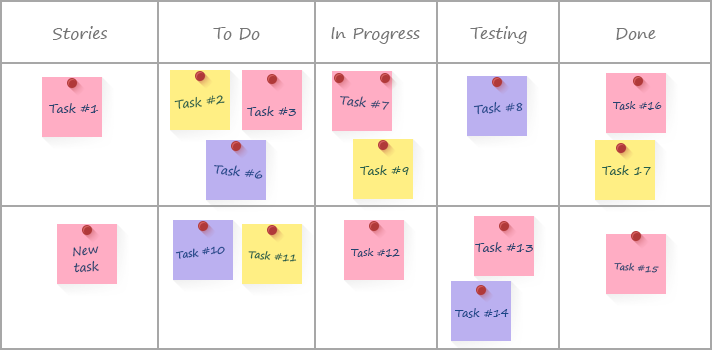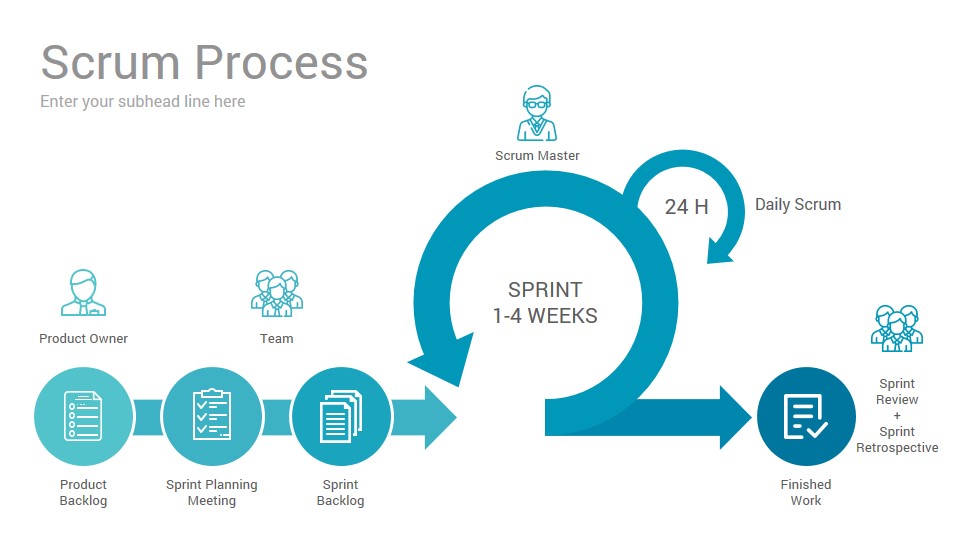What is Agile Marketing?
Agile Marketing was founded on the principles of Agile software development methodology. At its simplest, Agile marketing strategies focus on organizational effectiveness to deliver value to the end customer. In Agile marketing, the following core values are iterated:
- Responding to changes rather than strictly abiding by plans
- Emphasis on data-driven decisions instead of opinionated and convention-based decisions
- Rapid reactions rather than big-bang campaigns
- Smaller studies more than a few large experiments
- Collaboration over hierarchy
These core values drive growth and development and seek to provide the best value and experience to customers. Ultimately, Agile marketing improves the efficiency, predictability, transparency, and responsiveness to change of the marketing arm of organizations and businesses.
Today’s digital landscape requires marketers to be able to adapt to constant changes and trends and offer the best customer experience. It’s no longer enough to just sift through your B2B database and market the heck out of your existing contacts.
Steps to Implementing an Agile Marketing Plan
Agile techniques and strategies are becoming increasingly crucial to the success of marketing campaigns of many businesses in contrast to traditional waterfall methods. Here are the steps your need to consider when integrating and implementing agile marketing strategies into your own organization:
1. Prep your team
Bring together your team of talented individuals that can perform specific functions while working quickly with each other. Before you start implementing the Agile methodology in your marketing function, make sure that everybody’s on board. More importantly, take the necessary steps to ensure that each member of the team understands the goals and objectives of agile marketing.
For agile marketing to work, the team needs to have a clear direction of what they want to accomplish with their agile initiatives, such as the specific customer journey they want to improve or the target market they want to acquire. Set clear expectations. Prepare your team members emotionally and mentally for the coming months of hard work and intense collaboration.
It’s also important to make sure that the bosses fully support the switch to agile marketing strategies. Your team needs to set up the proper marketing tools, web analytics, and overall technological infrastructure before you even begin. These tools will help you capture data, and respond to changes and trends.
2. Plan your sprint
Agile uses short campaign or bursts, called sprints, instead of long-term marketing strategies. These sprints differentiate agile from traditional marketing strategies. Results are measured in as short as 2 weeks or as long as 6 weeks, depending on the specific goals and objectives of each sprint. In short, you need to carefully define your sprints and set precise timeframes for each.
During the planning session, the team needs to agree on the particular projects or sprints, and divide the roles and responsibilities. Ensure that each member of the team has creative freedom to tackle the projects they choose.
In Jim Ewel’s “Basics of Agile Marketing,” he laid out a great sprint planning agenda, which includes:
- Establishment of basic parameters
- Setting the scope and limitations
- Estimation of resources
- Sprint negotiation
- Assignment of responsibilities
- Written agreement on goals, projects, and roles
3. Sprint!
The sprint is the period during which team members work independently from their leaders, taking full responsibility for their work. This is when creative freedom is exercised, so each team member can determine the workflow that is most productive for them.

When you launch your sprints, it would be helpful to use a Kanban board that outlines your workflow. Create columns for your backlog, to-do, work in progress, rejected, done, and the like. As you progress through each stage of the sprint, notify your team members and include relevant notes or remarks.
Some teams like to use a whiteboard, but productivity tools like Asana, Trello, and Jira use Kanban board systems to help collaboration much easier. With online productivity tools, team members can work remotely and upload the files necessary when handing-off sprints to other workers in the team.
4. Scrum it up
Scrums, also known as standups, is the daily project management process for sprints, designed to increase alignment within the team and improve communication within the organization. During a scrum meeting, the team discusses what they’re working on, where they are in the process and the roadblocks they encountered.

Daily or weekly scrums break down sprints into smaller, more manageable pieces, rather than looking at it in a bigger picture. This helps the team determine what workflows are more efficient, so they can improve it accordingly.
Scrum meetings should be very short and direct, at approximately 15 to 20 minutes (which is obviously why they’re called standups). This meeting should not be considered as a reporting session, but as a way for the team to identify and overcome the challenges, they’re facing.
5. Hold a Sprint Review and Retrospective
A sprint review and retrospective are actually two separate meetings in the agile marketing methodology. During the sprint review, the same people that carefully planned the sprints are brought together to review whether each sprint was completed and whether each reaped positive results. What goals were met, and which ones weren’t addressed by the sprints? These are some of the issues tackled during the sprint review.
A sprint retrospective, on the other hand, should be attended by the sprint planners and the members of the team that worked on the sprints. Instead of discussing individual sprints, the general process is discussed to determine what went well and what needs improvement.
The results in both meetings will be taken into consideration for the next sprint planning session to ensure a smoother process and workflow.
Test, analyze, and repeat.
The five steps outlined above will make it easier for you to adopt an agile marketing strategy. This allows your team to rapidly adjust to changing environments and collaborate more effectively. Sprints enable organizations to test processes and strategies on a smaller scale instead of going big right away and setting unattainable goals.
Evaluate and analyze your results from smaller experiments and make data-driven decisions to ensure future success – that’s the main advantage of agile marketing. This eliminates costly marketing campaigns that don’t achieve their goals in the long run.
Because you have shorter and smaller campaigns, you can get immediate results, and adjust/improve your campaign in a more timely manner. With an agile marketing strategy, businesses can quickly deliver product/service updates that focus on driving real-time value for customers.
For more modern marketing strategies to make your brand stand out in 2019 and beyond, grab your free copy of our Modern Marketing Ebook!






